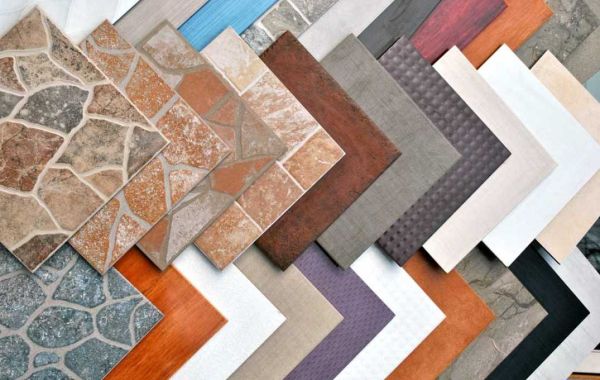Aesthetics - Tiles come in an assortment of styles and materials, ranging from porcelain and ceramic options for durability, to non porous tiles for easy maintenance.
Tiles
Tiles are a popular choice for wet rooms as they provide a stunning finish that's easy to keep looking its best, durable, and adaptable. There is an assortment of styles, materials, colours and textures available that can meet the design preferences of any wet room while working seamlessly with any drainage solution.
Mosaic tiles are an increasingly popular choice, and pair nicely with conventional square "middle of the floor" drains. When installing linear drains, however, more thought needs to go into which tiles fit best with their gully designs - large format tiles tend to work well when installing linear gullies that include tile infill or stone grills as this requires special consideration when choosing which tile styles should go in each section of gulleys.
Importantly, any tile selection must be water resistant so as to prevent water leaking through and creating damp problems in your wetroom structure. For optimal results, all tiling must be secured using waterproofing products and tanking membranes prior to being laid out.
Tile Adhesives
Tile adhesives provide a secure bond between tiles and their tiling base to reduce crazing, shedding and cracking. Unlike cement mortar, these can be applied directly from the bag using only water as mixing medium. The best adhesives have thin consistency similar to mud or mastic for easy DIY application and application is simple.
The best tile adhesives are moisture resistant, fast-drying and strong - qualities which make them great for use when renovating old floors or installing new ones. In addition, these flexible glues can withstand movement or deflection of substrates while remaining waterproof - perfect for new installations or renovating older ones!
The most widely used types of tile adhesives are polymer modified cement-based products with acrylic, latex or epoxy added for increased adhesion and moisture resistance. They come either as powders to be mixed with water, or pre-mixed pastes that make application quicker. These glues come either in powder form to be mixed directly into water containers, or ready-mixed paste forms that require no mixing at all - offering quick results! This type of tile adhesive also saves time when it comes to wall tiles, vitrified tiles or ceramic tiles which require soaking as it offers faster application!
Tile Grout
Grout fills in gaps between tiles to protect them from moisture damage and comes in an assortment of colors to add an eye-catching or subtle design element to any tile installation. Furthermore, it accommodates manufacturing tolerances within tiles while creating a compressible joint that reduces minor stresses during an installation.
Wood- or stone-effect tiles with their characteristic color variations require grout in a complementary hue in order to bring out their beauty, while tiles with more straightforward designs often look best with subtly-hued grout that blends in.
Cement-based grout has traditionally been the go-to choice for tile projects, but it can stain easily and is susceptible to moisture penetration. An alternative that may last longer is epoxy grout which uses aggregates, epoxy resins and hardeners in combination with aggregates for an impenetrable seal that won't stain - more expensive but resistant to staining more frequently! This option should last longer and less frequently need sealing.
Tile Sealant
Tiling a wet room should never be taken lightly. Poor tiling not only looks unsightly, it can lead to leaks which cause water damage in other rooms or even cause structural problems that require extensive repairs.
As part of a proper tanking membrane and adhesive installation, it is vital that an appropriate tile sealant be utilized. A suitable sealant will protect tiles from dirt and spillages making them easier to maintain as well as prolong their lifespan.
Tile sealants Moderntiling.ie come in two varieties, surface sealants that act like coatings and penetrating (or impregnating) sealants that penetrate deeper, filling any pores your tiles may contain and creating a protective barrier around them.
Make sure that the tiles are thoroughly cleaned before applying a sealant, following the manufacturer's recommendations on its packaging. Once applied, let it set before leaving it to dry according to its drying timeframe - though be mindful to do it in an area with plenty of ventilation as many sealants produce strong fumes.








